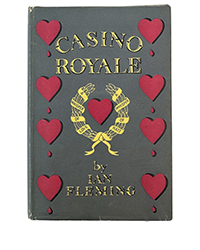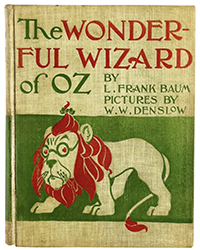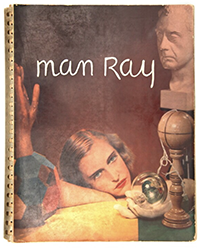It is conventional wisdom these days that books are dead. By books, I refer to the printed version, not the electronic impulses that constitute the books you read on your Kindle or iPad. It is those copies made from paper and ink that are “dead.” Didn't sales of the electronic versions soar past those of the traditional ones at the world's largest bookseller, Amazon, long ago? Haven't traditional retail bookshops mostly disappeared from the landscape? Once conventional wisdom has placed its judgment upon you, there is nothing left to do but say goodbye.
And yet... Today we see a number of new high-volume sellers specializing in “books by the foot” or “books by the pound.” Wait! Don't hit the back button just yet. Hear me out. There is a business that goes by the name “Books By The Foot.” You can buy a foot of books for as little as $4.99. Or, you can select. If you like red books or green books or pink books, you can fill you shelf with your favorite color. Alternatively, you can select by size, age, or subject matter. You probably won't read any of these books, but if you select wisely, they will look very nice on your shelves.
Even the venerable Strand book shop in New York offers books by the foot. Their offering feels a little better as they create “libraries,” books compiled by subject rather than color. Still, it seems dubious that their buyers actually read them. Strand will even rent you these books, but again, this is not like a lending library for readers. It's for staging a model apartment or for use in a film shoot.
Then there are those who sell by weight rather than dimension. Market Fresh Books (“deli style”) of Evanston and Chicago, Illinois, offers books cheaply by the pound. These, actually, are more aimed at readers, being newer, used books, often paperbacks, that aren't going to command much of a price sold individually.
There is a website called “Bookshelf Porn,” and if you love books, you will love this site. It consists of pictures people have submitted of their bookshelves. There is something riveting and beautiful about a bookshelf full of books. You instantly understand why people buy bookshelves for their homes, and if they don't have books, buy them by the foot to fill up those shelves. Nothing can combine art and intellect quite like a book. What you can't tell from these pictures is whether anyone ever read these books.
I have heard that many people, particularly in tonier neighborhoods of pricey cities, consider book-laden shelves de rigueur. I did a little research to see how popular these book storage devices are. If books are dead, then bookshelves must be too. Tire sales will crumble if people stop buying cars. It's sort of what they call in market investing a “leading indicator.”
I went to Amazon and did a search for “bookshelf.” It returned 36,055 matches. “Bookcase” did even better, with 46,170 matches. Undoubtedly, if you dug all the way to the end, some matches are probably accessories or something other than true bookshelves. Nevertheless, that is a lot matches, and everything on the first few pages was legitimate. Certainly, some people buy bookshelves for other uses. Still, bookshelves aren't a good match for most other purposes. You can't fit many knick knacks on them. I have a receiver/amplifier on a bookshelf by my desk, but it hangs over the edge. All of these pictures displayed books on the shelves. That is obviously their primary use.
A similar search of eBay revealed 17,492 matches for “bookshelf.” “Bookcase” doubled it at 35,524. Wal-Mart dot-com, admittedly not the most likely place to find owners of tonier homes, offered 1,552 matches for “bookshelf,” 5,045 for “bookcase.” Even regular folks appreciate books. How can there be so many bookshelves offered for sale if no one wants books anymore?
That brings us back to that initial squeamishness we felt when the expression “books by the foot” was mentioned. Something doesn't feel quite right about it. No one buys a yard's worth of red books to read them. But, is this fair? Is anyone more honored in the book collecting field than the 16th century French collector, Jean Grolier? America's most famous society of bibliophiles is named for him. Is Grolier remembered because he was a great reader? No. He is remembered for the exquisite bindings he had prepared for his books. I'm sure Grolier read his books (actually, I'm not. I have no idea). Still, it is his decoration of them that has made Grolier the most famous bibliophile. His exquisite bindings were totally unnecessary for reading. They served only to make his books beautiful, works of art, like those bookshelves filled with books by the foot. What's the difference between a shelf full of books with fine bindings versus a shelf full of pink books, other than good taste?
How about the greatest of the fine, private press printers, William Morris? Is he renown because he selected for printing those titles which were the most interesting to read? Ever try to read Chaucer? Unless you are some Old English linguist, you won't have a clue what he is talking about. Nevertheless, the greatest private press book ever printed remains Morris' Kelmscott Chaucer. If you know someone who owns one, and you ask whether you can take it out to read, be prepared for some language you won't hear in a lending library. What it means is “no.”
The fact is, people have been buying and collecting books for reasons other than textual content for centuries. Even Gutenberg's Bible was far fancier than it needed to be for simple reading. Compare it to another famed book meant just for reading, the Bay Psalm Book, and you will notice a stark difference. Books are for more than reading. So, maybe we shouldn't be upset with the concept of “books by the foot.” Those aren't the first books that won't ever be read. Even so, they are a reminder of the role books have played in our lives, in our history, in our learning and intellect. They are a symbol, and the fact that the symbol we pick to fill our shelves is old books, rather than old televisions, computers, e-readers, and the like, is a statement. Maybe books aren't dead after all.





![<b>Sotheby’s:</b> Ernest Hemingway. <i>Three Stories And Ten Poems,</i> [Paris], (1923). First edition of Hemingway’s first published book. $75,000. Sotheby’s: Ernest Hemingway. Three Stories And Ten Poems, [Paris], (1923). First edition of Hemingway’s first published book. $75,000.](https://ae-files.s3.amazonaws.com/AdvertisementPhotos/acf970a0-a15d-4c79-aa24-5e8e414cb465.png)




